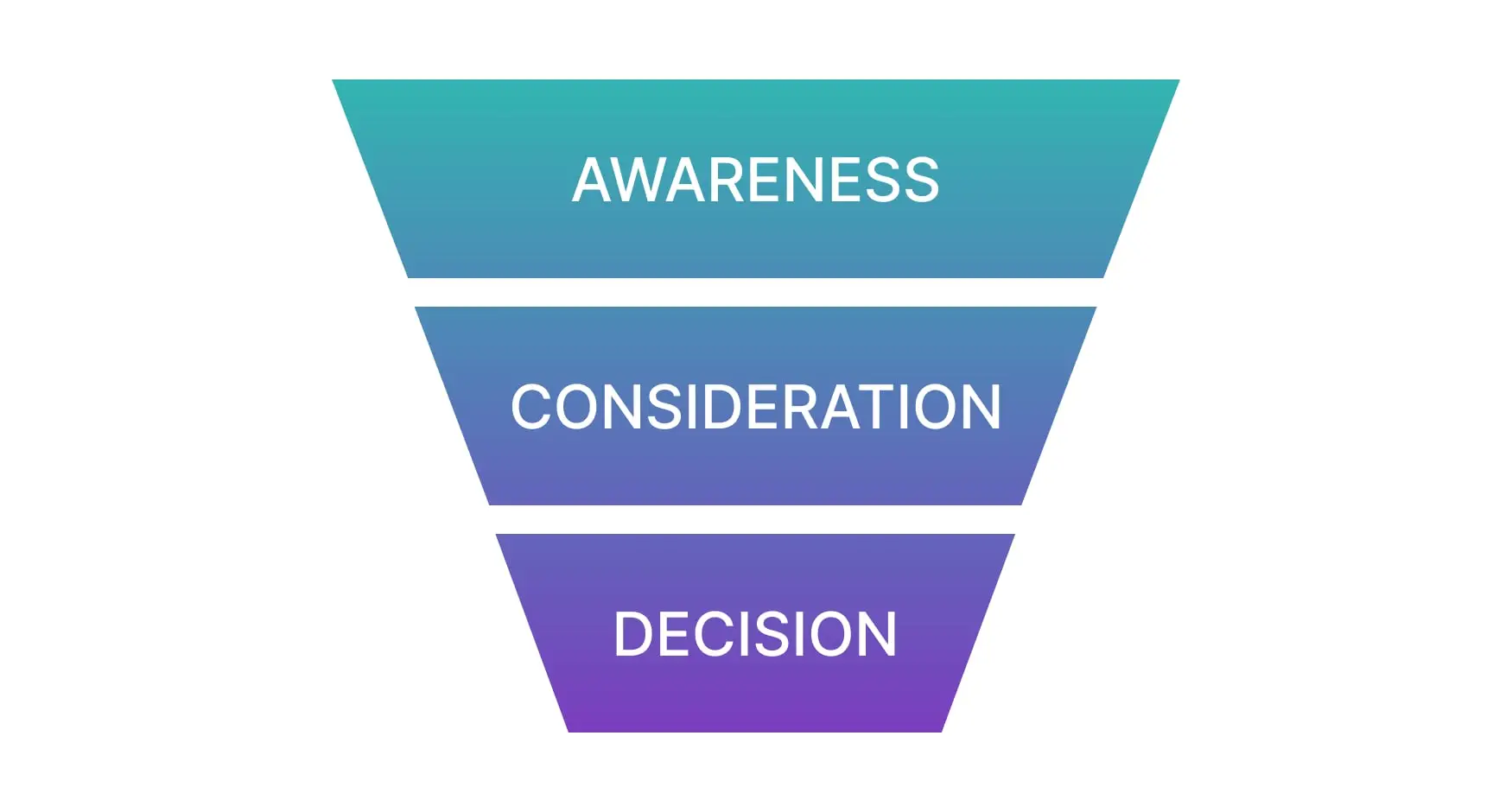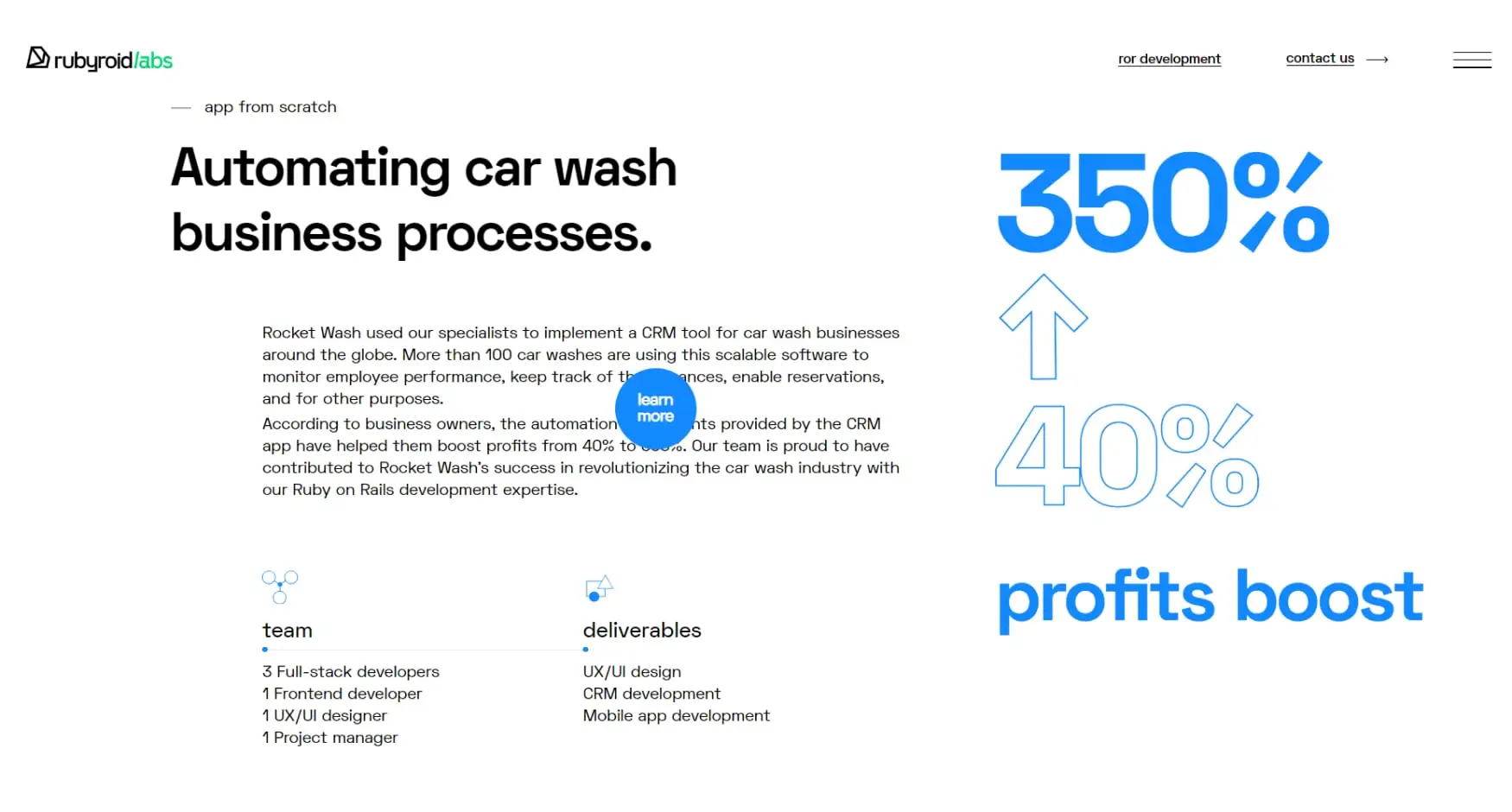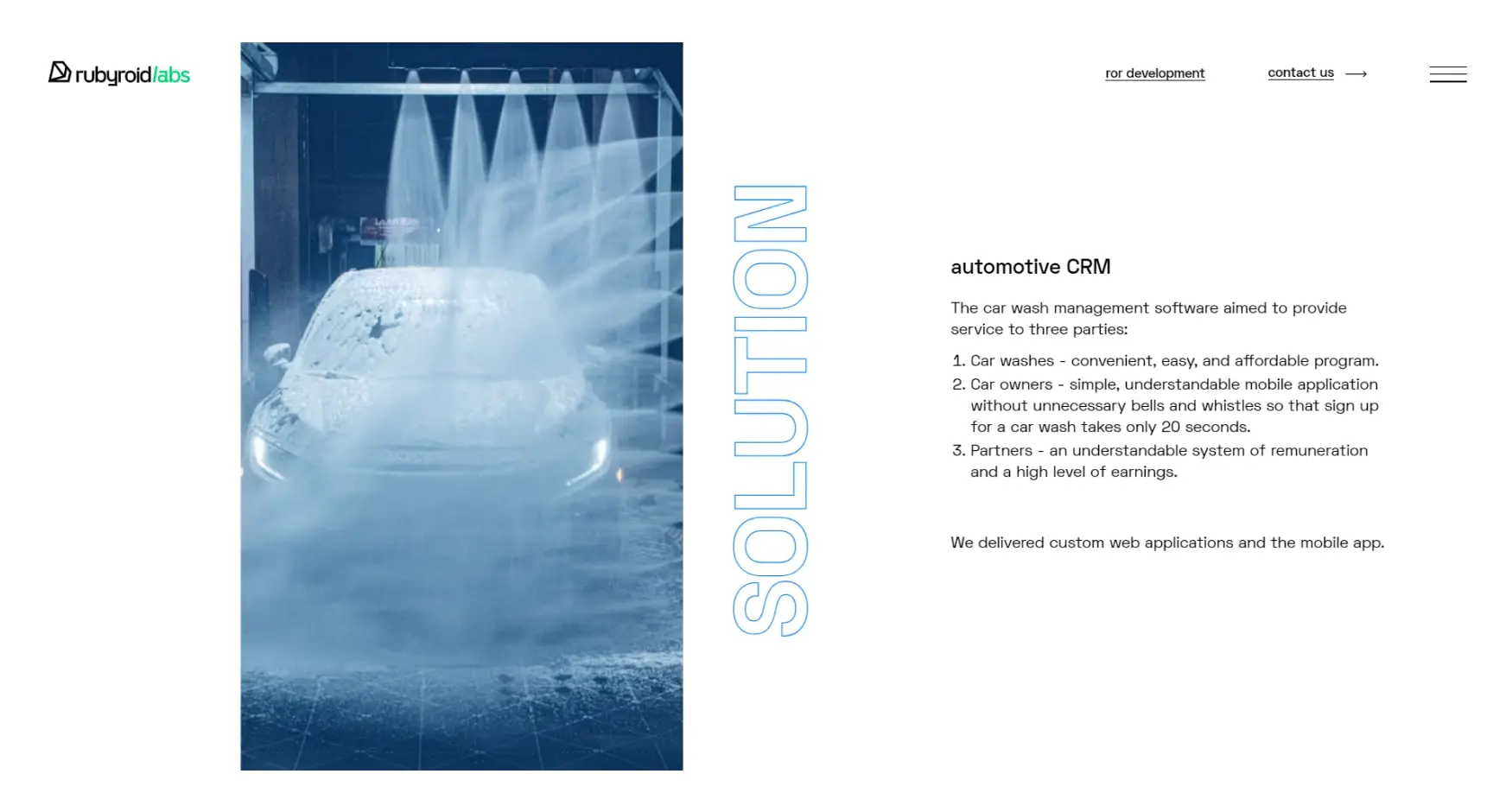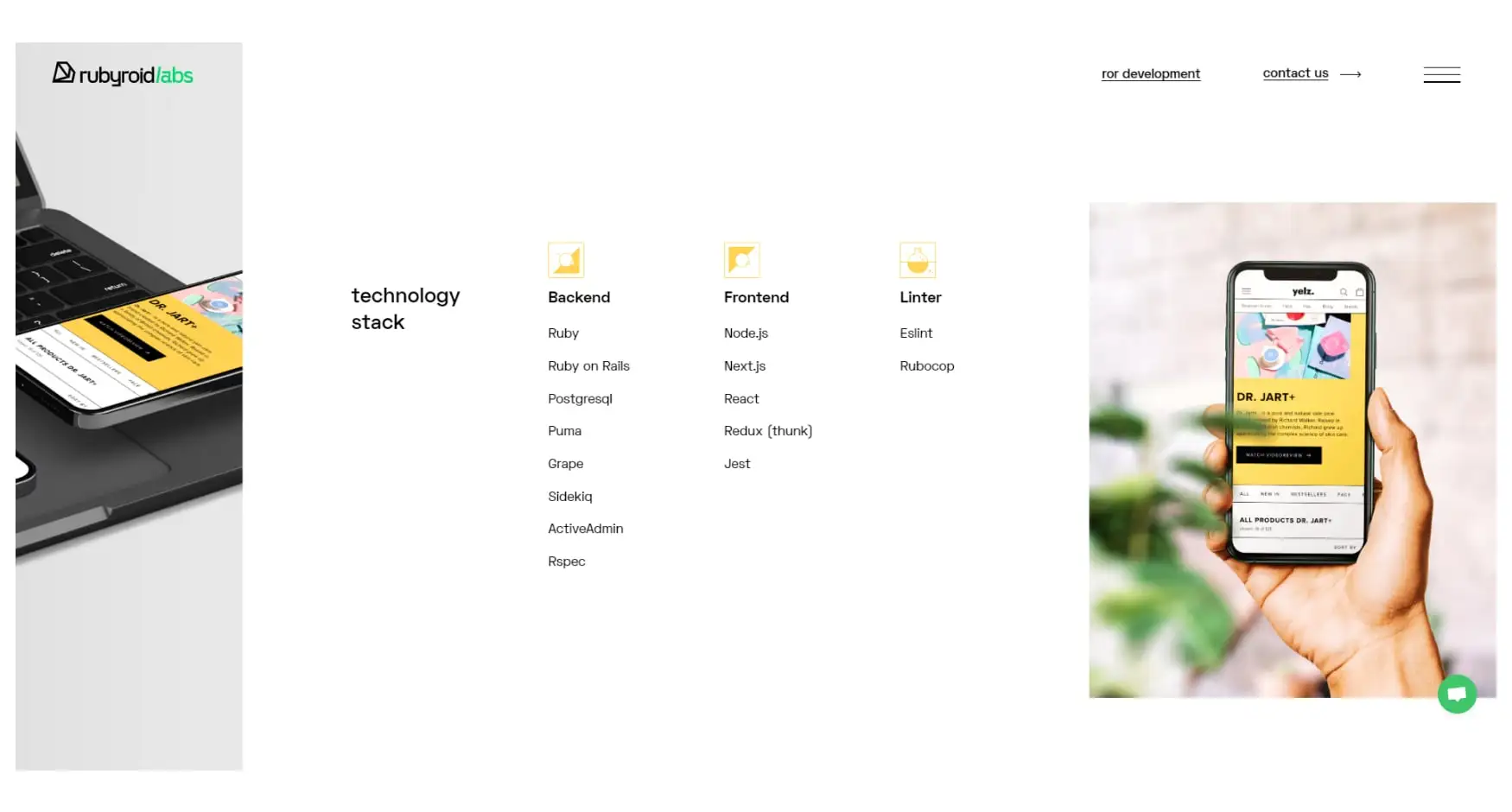Have you noticed that every click now equates to a potential opportunity? And that every word represents digital currency? In this environment, content marketing for software companies is becoming a powerful scaling and growth tool.
Content marketing is an investment that works for years as long as the content is online and can deliver value.
- What Is Content Marketing for IT Companies?
- Stages of Content Marketing
- The Content Marketing Funnel for Software Developers: How to Write Effective Content
- What Will Help in Finding Topics for Content Marketing
- Content Plan
- Types of Content
- Blogging on Your Website
- Social Media
- Social Networks
- Video Marketing
- Podcasts
- Real-Time Broadcasts
- Lead Magnet
- Ebooks and Whitepapers
- Email Marketing
- Guest Content
- Free Tools and Resources
- User-Generated Content
- Collaborate with Influencers and Industry Experts
- Comparative Content
- Success Stories and Case Studies
- Content Marketing Tips
- Evaluating the Results of Content Marketing
- Conclusion
Carefully constructed content marketing can be your superpower, bringing attention and clients to your company.
What Is Content Marketing for IT Companies?
Content marketing is a marketing strategy that attracts new clients and builds trust with existing ones through the creation and distribution of useful text, video, audio or graphic content.
At first glance, it seems simple — write text, shoot video – and there’s your content marketing ready. But just writing is not enough, you need to understand what to write about and for whom to write. To define your positioning and recognize your strengths and weaknesses, opportunities and threats, you can use the simple method of SWOT analysis for a software development company. The results of the analysis will help in building your content marketing strategy.
Content marketing is more than just material for publications. It is a multi-functional assistant for your business. It helps:
- Shape the digital image of your company.
- Attract the attention of potential clients.
- Identify the needs of your target audience.
- Touch clients at different stages of the buying decision.
- Educate your target audience.
- Gain new clients.
- Retain existing clients.
- Build a bridge between the idea and the client.
- Establish trust in the company and build credibility.
- Strengthen the sales process.
- Strengthen and maintain SEO for software development companies.
- Reduce advertising costs.
- Create and continually update your company history.
- Establish long-term relationships with clients.
Content marketing for a software development company is a concentration of benefits.
Keep in mind that a reader does not make a buying decision overnight, nor does he immediately become a client. He makes a decision both when he sees ads, and when he thinks about you, and when he talks to his friends, and when you let him see the benefit of your software.
Sincere, valuable, useful, strong and clear should be all text — on your website, in your ads, in your blog, in your email newsletter, in your manual, and with your manager on the phone.
Stages of Content Marketing
Effective content marketing for IT companies is a clear process:
- Research yourself as a company, your target audience, its needs.
- Formulate goals to achieve. Use the SMART method to set goals.
- Develop and visualize a marketing funnel.
- Create a list of topics for each stage of the funnel that will be useful and interesting to the target audience.
- Evaluate company resources (human, financial, time) and forecast investments.
- Make a content plan taking into account the resources.
- Make TORs for content development (marketing, SEO).
- Create the content.
- Publish the content.
- Promote, distribute, share the content.
- Evaluate the results.
- Publish content regularly.
- Make adjustments as needed.
To achieve set goals, it’s important to act consistently. Acting on impulse, without a plan, or skipping stages makes it hard to evaluate results.
The Content Marketing Funnel for Software Developers: How to Write Effective Content
Content should not only be valuable and relevant, but also consistent. This means that content should be served in stages to form a content marketing funnel.
A content marketing funnel helps to gently yet strategically guide clients to your services.
The funnel visualizes the stages of content usage by your potential clients and helps build the client journey. A meticulously designed funnel is a way to consistently get clients for a software development company.
Stages of a content marketing funnel:

Top of the Funnel — Awareness Stage
At the first stage, offer valuable content to your target audience:
- Innovative software solutions in their industry.
- Tools used by their competitors.
- Material on how to increase profits, find clients, reduce costs, and optimize processes in their business.
- Trends in their industry.
- Research on their market.
For example, you can create an article on “How does chatGPT help financial businesses?”. This kind of content will help generate interest in solutions that your clients didn’t know about or haven’t used before.
The main rule of this stage is not to sell, but to provide useful information and interest the audience. Mention the audience’s problems, and in some cases, inform them that the problem even exists and show them what solutions are available.
Middle of the Funnel — Consideration Stage
Prepare the following content for the consideration stage:
- Your experience solving problems similar to the client’s.
- How did your solutions help the client’s business, what did they gain?
- How quickly did the development investment pay off?
- Talk about the MVP development opportunity and its benefits.
- Safety of the proposed solutions.
An example of such an article would be: “How does our chatbot based on chatGPT bring hundreds of thousands of dollars to a famous bank?”. The reader realizes that he also needs this solution and moves to the next stage of the funnel.
At this stage, it’s important to be persuasive but not intrusive. Here the target audience wants to understand how the solution works, what the advantages and disadvantages are. Talk about your expertise and experience.
Bottom of the Funnel — Decision-Making Stage
At the decision stage, the audience is looking for:
- Arguments why it is worth choosing you.
- Cost and timeframe for developing proposed solutions.
- Factors to consider when making a decision.
- Warranty and technical customer support.
Suggest an article, “How much does it cost to develop a chatbot based on chatGPT?”. If the cost of developing the solution fits into the potential client’s budget, they will proceed to the lead form.
Provide the client with simple, clear and honest content. Close the doubts and questions of the client before they arise. This will help build client trust in your company and increase the chances of a transaction.
Beyond the Bottom of the Funnel — Retention and Repeat Orders
Don’t forget your current clients. Create content like this for them:
- Insights, something that is not in the public domain.
- Newsletters with invitations to participate in conferences, webinars.
- Educational content.
- Recommendations of useful, interesting services.
- Offers of partnership options with clients.
- Information about software updates.
This stage is important for the growth of your company, retention of current clients. The audience that will be “for you” is formed. You can offer existing clients additional services that you have not sold them before. Don’t leave your loyal clients unattended. Satisfied clients bring new clients.
Offer the user a path they won’t get off without making a conversion.
Creating content for each stage of the funnel is extensive work. But by doing so, you increase your chance of reaching a larger pool of potential audience. Having content for audiences at different stages of the buying decision doesn’t guarantee that the entire target audience will go through all stages of the funnel from the beginning. Someone will start from the second stage, someone from the third, and your existing clients may be at the first stage, studying new developments of your company. But by writing for all stages, you increase your reach and the likelihood of getting a client.
What Will Help in Finding Topics for Content Marketing
The reason for creating content shouldn’t be “we know a lot of topics” but “our audience has a need”.
What helps in identifying topics:
- Research and surveys of the target audience.
- Conducting CustDev.
- Analytics on your website.
- Topics on which competitors write.
- Analyzing user queries using special tools Google Keyword Planner, Ahrefs, Semrush, Google Trends.
- The site’s search data can help you understand what your users are searching for.
- Direct communication with existing or potential clients.
- The direction you want to pursue more. If you are interested in mobile app development, then your content should directly or indirectly relate to your topic.
- Feedback and comments. It’s not just information, it’s an opportunity to clarify details with your audience: what they liked the most, what was the most difficult.
- News related to your niche or specific topic.
Content Plan
Once you have selected topics, create a content plan. A content plan is a pre-prepared list of topics with content release dates. It can be designed to last a month, two months or longer.
A content plan allows you to:
- Plan the time, budget and team to create content.
- Avoid downtime in content output.
- Minimize the risks of duplicating information.
- Avoid rush and reduce stress levels of employees responsible for content.
- Order material in advance from a copywriter, videographer or other specialist.
- Produce articles, prepare other types of content in advance and set up delayed posting for scheduled dates.
- Take into account technical peculiarities, such as the time it takes to upload lengthy videos to YouTube.
- And more.
Consistent content release is important for search engine algorithms, social media engagement, and fostering audience loyalty to your material.
Use tools to post regularly.
Types of Content
Types and characteristics of content marketing for software companies:
Blogging on Your Website
- Someone who comes to read a blog article on your website might proceed to your services or case studies pages, become interested, and contact you through the contact form.
- A blog on your website helps with SEO, attracts additional traffic, and increases behavioral factors. Don’t forget that all your articles need to be optimized.
- Use related blog articles on service pages to clarify information about the services. The proper website structure is crucial. It allows guiding the user through the path you’ve pre-established in the funnel. With a good website structure, the user receives answers to their questions and won’t leave without converting.

Social Media
- Use other resources to post your content similar to blogging on your website.
- Publish for a fee on such well-known resources as Forbes, Bloomberg, TechCrunch. This will increase your visibility, helping you attract a new audience. And not just an audience, but an audience that reads and trusts the site where you are posted, which means your credibility increases immediately.
- Use free content platforms like Medium. Regular blogging on such resources is effective.
Social Networks
- Everyone uses social media.
- LinkedIn, Facebook and Twitter are best for technology companies. Other social networks have less influence in the B2B segment.
- Using creator mode on LinkedIn and optimizing articles can help them rank at the top of Google for popular queries.
- Share content from the blog on your social networks.
Video Marketing
- Create video tutorials, product reviews, webinars, interviews.
- Pay attention to the video description and include relevant keywords. Learn the rules of the site where you publish. There are always ways to improve ranking, as in SEO, and reach a larger audience.
- Transcribe your videos to provide textual content for search engines to scan and make it more enjoyable for your audience to use your material.
- Conversely, you can create videos based on the scripts of your articles.
- YouTube, TikTok, Instagram, and Telegram are platforms for posting and promoting your videos. Embed videos on your web or blog.
Podcasts
- Create audio content in podcast format for audiences to listen to. There is less competition in this area than in video content.
- Podcasts stand out for their convenience and flexibility.
- Choose the interview guests your audience wants to hear.
- Audio is a convenient format for learning — you can listen on the road, on a walk or in parallel with other activities and in accelerated mode.
- This format benefits not only your target audience but also helps your company build relationships with podcast guests, potentially leading to future collaborations.
- Post your podcasts on platforms like Apple Podcasts, Spotify, Google Podcasts, and Stitcher, and talk about them on your blog and social media.
Real-Time Broadcasts
- Make time for webinars and live Q&A sessions to communicate directly with your audience.
- Use ZOOM, YouTube, Instagram, TikTok, Telegram for live broadcasts.
- Your audience will ask questions, post comments. This may give you a vision or ideas you may not have even realized you had.
- Introduce your target audience to your team.
Lead Magnet
- Offer something in exchange for a potential client’s contact information. It could be a PDF file, infographic, ebook or a complete guide on a specific topic, tips or checklist.
- A lead magnet is an important element of the content marketing funnel that brings your buyer persona closer to your company.
- These visitors will end up in your retargeting database, which can be used in advertising.
Ebooks and Whitepapers
- Create full-length ebooks or white papers. These can be research papers or guides related to topics of interest to your audience. Showcase your expertise and offer valuable information.
- Create landing pages on your website where visitors can download content in exchange for their contact information.
- Companies like Salesforce, IBM, SAP, and HubSpot actively use this type of content marketing.
- Use them not only as lead magnets. Distribute such content wherever possible, such as social media.
Email Marketing
- Use email newsletters to provide personalized content and stay in touch with subscribers.
- Send a selection of weekly updates, your blog articles, videos, exclusive offers. Share tips for solving problems close to your target audience. Collect feedback. Share useful services with your audience that you personally use to improve your processes.
- Mailchimp is one of the best services for email newsletters.
Guest Content
- Use outreach to post on listings and topical blogs. This kind of content helps in Link Building.
- Guest content should be as good as or better than what you publish on your site. Good guest content material establishes a quality first touch with a new audience looking for solutions in your niche. Don’t forget about SEO optimization of third-party content.
Free Tools and Resources
- Offering free tools and resources demonstrates your desire to provide value to your audience. This way it builds your credibility in the industry.
- Free tools and resources will set your brand apart from your competitors. Create templates, calculators. This method is a great aid in enhancing your company’s recognition.
- Analyze the downloads and usage of your free product – this can help identify the less obvious needs of your target audience.
- Distribute tools from your site, attracting a huge number of free themed backlinks.
User-Generated Content
- This is content created and shared by your clients or users, showcasing their experiences, success stories, testimonials and more.
- Boosts trust among the audience. Builds a strong connection between your brand and its clients.
- Encourage your clients to share their success stories, testimonials, or case studies. At the very least, make it a habit to ask clients to leave reviews on Clutch and Google Business.
- The highest level for a company is when your clients are so happy with the service that they are willing to share feedback even if you don’t ask for it.
- Be sure to respond to comments and keep in touch to maintain contact.
Collaborate with Influencers and Industry Experts
- Seek out opinion leaders who have established themselves as trusted authorities in their field, intersect with you in terms of audience and values.
- You can collaborate in a variety of formats — publishing guest articles on blogs, working together on shared content, ebooks or webinars.
- Approach collaboration as a mutually beneficial partnership, not as one-time deals.
Comparative Content
- Creating content that compares your services to competitors and helps potential clients make a decision in your favor.
- This kind of content is well suited for your blog.
Success Stories and Case Studies
- Real success stories and client stories that demonstrate the value of your service.
- Describe each of your projects from four perspectives: Services, Industries, Solutions, and Technologies. This will help you reach audiences with different needs and give a broad understanding of you as a company — what services you provide, what industries you help, what problems you solve, what technologies you work with. Examples of case descriptions:


- You can publish such stories both on your blog and on third-party resources.
Content Marketing Tips
Write clear terms of reference for content creation. This will save time in both content creation and review. Having clear, understandable and consistent tasks helps to achieve the intended results quickly.
Create SEO optimized content. Your content should not only be useful for your target audience, but also for your search engine ranking promotion. Include search queries and phrases that your target audience uses in your content.
Study the algorithms of the sites on which you are placed. Optimize your video content and social media posts for their requirements. This can be timecodes, hashtags, metadata. All of these things help with promotion.
Keep an eye on your competitors, adopt methods that suit your business.
Draw attention to your company through content marketing tools. Targeted advertising and PPC (Google Ads, Bing Ads) can help you.
Distribute content across different channels. Use a blog article to create small videos, or as a topic for a podcast, or as material for social media posts. Don’t be afraid to repeat important topics in different content formats.
Until you speak up about yourself, no one will find you.
Update articles, materials that contain prices, statistical data to keep your content always up to date.
Tag your content with UTM-tags to analyze which content is more attractive, where users come from.
Adhere to the principle of E-E-A-T (Experience, Expertise, Authoritativeness and Trustworthiness) when writing content.
Observe regularity. Regularity helps build a habit among your users and search engines to your content.
Use a branded style so that you are recognized. Add watermarks to images, develop rules for text formatting, greetings, image sizes and formatting.
Experiment with combinations of content formats.
Collect and analyze feedback from clients.
Combine benefit, emotion, quality, convenience in content.
Keep your focus on establishing a long-term relationship with your audience.
Content marketing helps build a connection with your audience. And this connection serves as a defense against competitors.
Evaluating the Results of Content Marketing
Goals + Strategy + Quality + Consistency = Content Marketing Success.
Back to goals again. The indicators you should track depend on them. The more precisely your goals are formulated, the clearer it will be to you what indicators to look at in order to evaluate the result. Use the SMART (Specific, Measurable, Achievable, Relevant, Time-bound) method to set clear goals.
Analyzing the results is a thermometer that helps guide you to adjust your actions in time. This is an important stage that will help you understand which part of the content marketing process needs to be strengthened or completely revised.
It’s important to set up an analytics infrastructure before publishing and distributing content:
- Use Google Tag Manager, Google Analytics, built-in tools of the resources on which you will be placed.
- Add UTM-tags and referral parameters to links.
- Set up milestones in CRM.
- Integrate forms into the CRM.
- Customize CRM to work with source parameters.
Conclusion
Client attention is the highest value, so creating quality and engaging content becomes an important part of a company’s success. Maintain high-quality content across all channels and at every stage of the funnel.
Creating content that converts is the main goal of the content marketing funnel. Putting together an effective funnel takes time, testing, and patience, but this investment will bring in new clients. With a solid strategy, your business will be able to engage with your audience and influence their buying decisions at different stages of the content marketing funnel.
Don’t forget to give current and future clients a reason to come back.
A strong content strategy is only part of overall success. It is important to pay attention to content promotion, audience interaction, SEO optimization, results analysis and timely adjustments.
We help software companies build and implement a content marketing plan, and accompany them every step of the way.
Contact our team to develop a content marketing strategy for your company.





